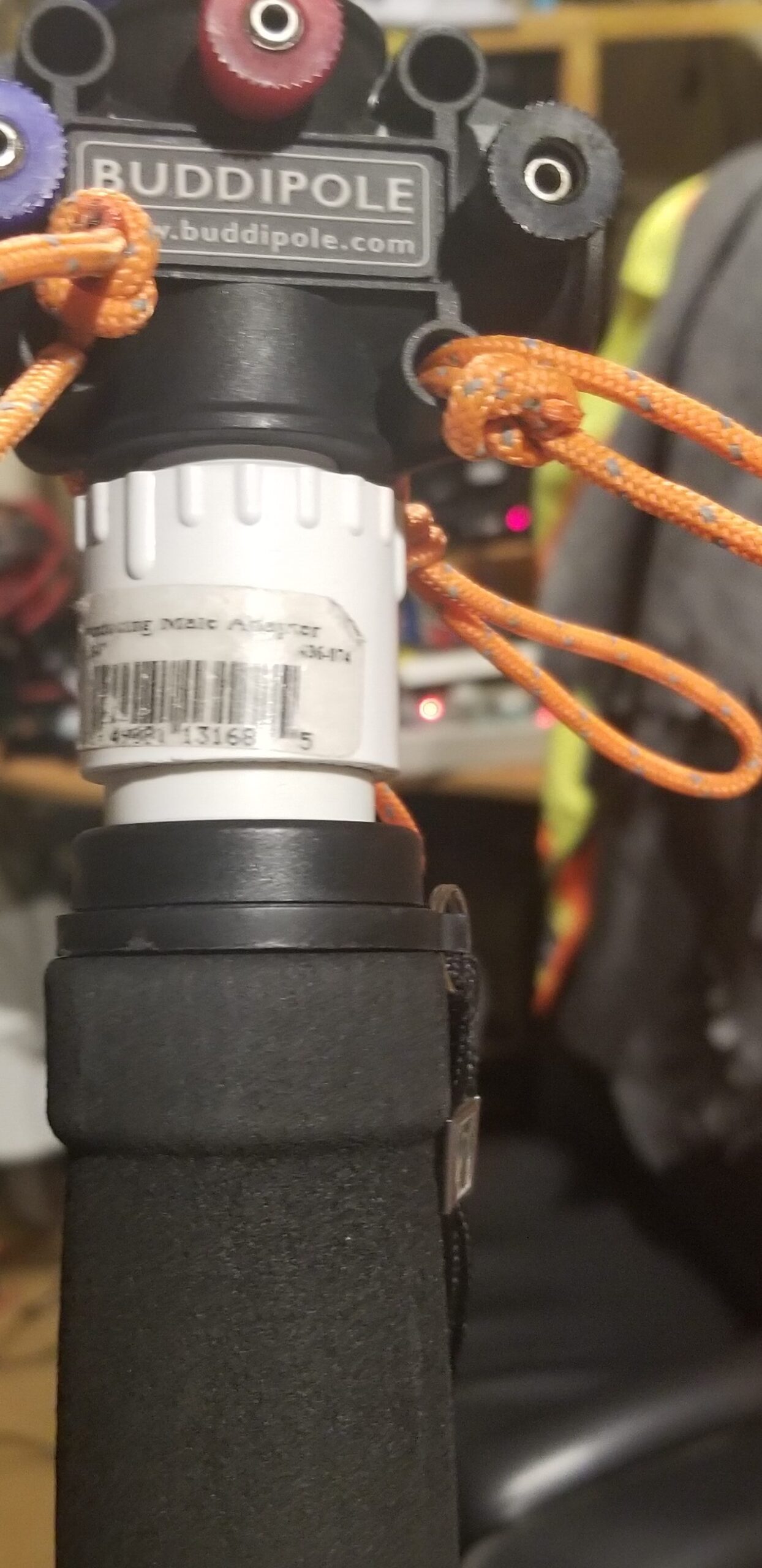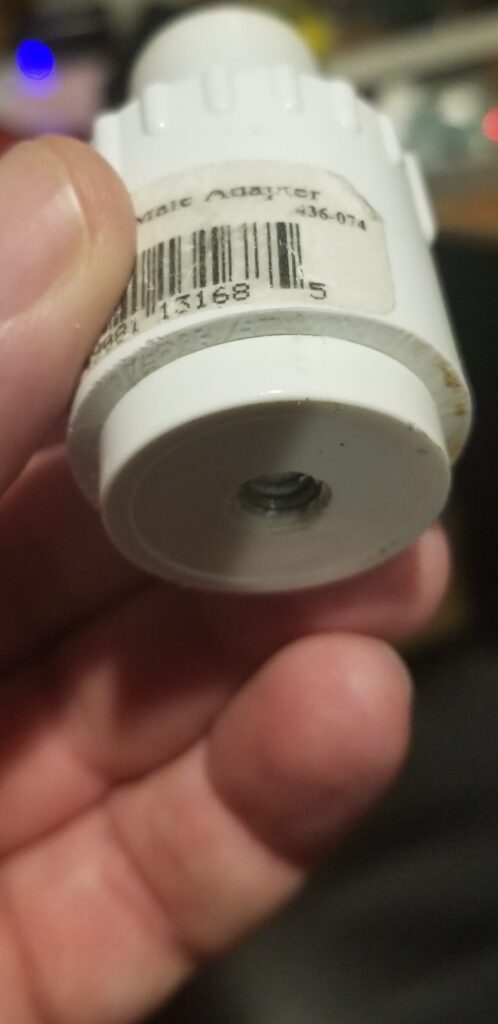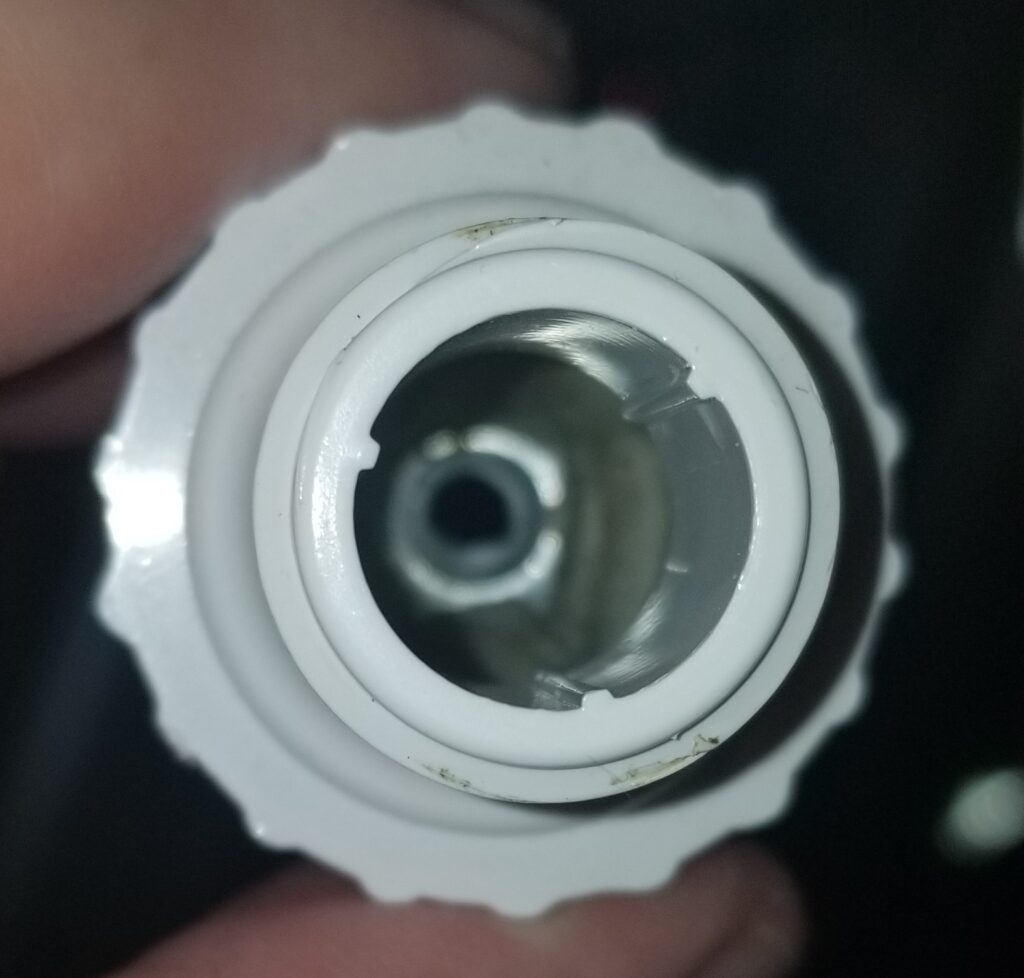As hams we are by nature cheap. Partly because our hobby can be pretty expensive with all the radios, antennas and cables that we buy and partly because most hams are pretty industrious. We just don’t see the need to spend premo dollars on things that we can make ourselves for just a couple of bucks.
Just recently there was an email message going across a mailing list looking for a non-conductive tripod adapter for mounting an antenna. In this case I believe the ham was looking to mount a ham stick.
The mailing list did not allow image attachments through the list, so I figured I would throw a quick post together for the ham to get a couple of ideas and share with anyone else that might find some thing like this useful.
In my case I use a monopod and mount a Buddi-pole whip to it for a quick antenna that is wonderful for SOTA. The Buddi-pole whip actually mounts to a Versa-tee and the Versa-tee mounts to the adapter that I made, but the principle is the same.
I use a 3/4 inch PVC plug that can be found in pretty much any plumbing section of your local hardware store and drill a hole in the center to mount a 1/4-20 T-nut for attaching to the monopole. The T-nuts have “fingers” on them that get driven into the PVC plug to secure it. I also secure the T-nut inside the plug with a ring of JB weld epoxy mashed into the bottom of the plug. Make sure you leave the center empty so that if you have long threads they can continue up into the adapter.
For my adapter, I found that the Versa-tee had the same threads as some common plumbing threads. So I was lucky with just being able to find an adapter to glue the plug into.
If you are looking to mount a ham stick or other antenna that has a 3/8 inch mount (3/8-24 is the size bolt you will want to use), then it as as easy as another 3/4 inch plug drill a hole for a bolt. I would probably take the same approach of inserting the bolt in the hole and then take a bunch of JB weld epoxy and mash it into the end of the plug to secure the bolt. Then one does not need to worry about a nut to secure the bolt or having it loosen up and the bolt falling into the adapter.
Now just a short section of 3/4 inch PVC tubing (about 1 -1.25 inches) and some PVC cement will finish off the adapter. For about $5 or so you can have your own adapter which if it gets lost you don’t have to fork over another $20-$30 for another custom adapter. It is even easy enough to build in the field with a few basic tools if you need to.
73



